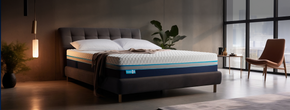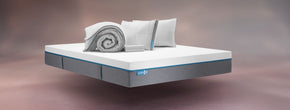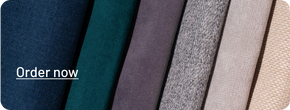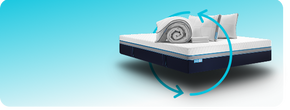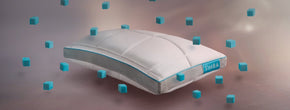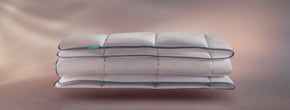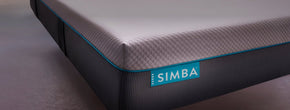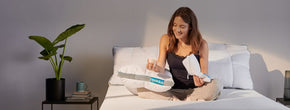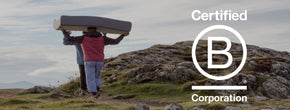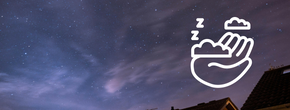Reflexology Pressure Points for Sleep

Your pre-bedtime routine is a hugely important part of getting a good night's sleep. A lot of that starts in the head - but sometimes it begins from the ground up, too. That’s right - reflexology, particularly focused on the feet, could help you doze off after a long and stressful day!
Stress is an enormous interference to a sound night’s sleep, or even getting to sleep in the first place. As soon as our head hits the pillow, our mind is flooded with the memories of the day and our body is still holding onto all that tension. Then we toss and turn fitfully in bed - often because we haven’t properly wound ourselves down for the night.
Reflexology can help you sleep, beat insomnia, and generally get a better night’s rest. So how does it all work?
What is reflexology?
Reflexology is an ancient form of therapy that focuses on different parts of the body. It’s been around for over 5,000 years, and it has been used for everything from pain relief to helping you drop off.
In reflexology, the body is like a ‘map’ (you can find maps for every body part), and applying pressure to certain parts of the map creates a reaction in the brain, such as blocking pain or helping you feel calm. It’s very much like massage, but concentrated on very specific parts of the body and with the aim of achieving particular results.
Our sleep and mindfulness expert Hope Bastine says:
“Reflexologists see the body as an interconnected matrix of zones – so theory goes that if you massage a certain zone in your hand or foot, you will feel your body relaxing and the stress melting away.
“What’s known by some as ‘Reflex Zone Therapy’ singles out ten zones, divided down the middle of our body: five on your right side and five on your left. Each is said to correspond with the muscles and organs on that side of your body, and to connect to ‘pressure points’ in your hands and feet.”
Can reflexology really help you sleep?
The jury is very much out on whether reflexology really works, and doctors don’t recommend it as a treatment for serious health conditions. However, it can be a very effective complementary therapy as it helps you relax and takes your mind off other things - which makes it the perfect antidote to sleepless nights.
Trying reflexology shortly before bed makes it as effective as possible. We think it’s a great idea to combine it with some pre-bedtime stretches as part of your sleep hygiene routine.
Pressure points for sleep
When you’re using reflexology for insomnia, focus on a specific point on the bottom of your foot. This is called the ‘insomnia point’, and reflexologists believe that massaging it can help induce sleep.
You’ll find it at the bottom of your feet, at the bottom of the curve of your heel (at the point where your foot begins to arch again). It’s said that if you’re having trouble sleeping, you’re more likely to feel a little sore here, a sure indicator that you’re having sleep problems.
Massage this point on both your feet using your thumbs. With over 14,000 nerves in your feet you’re sure to feel some of the benefit, even if it is just a relaxing activity.
The insomnia point isn’t the only place you can massage to help you sleep. You can also try stimulating the following spots before bed:
- Zone 1 is in each of the toes and the base of the toes. The area around your toes is said by reflexologists to follow a pathway through your body to your brain and head.
- Zone 2 is in the balls of your feet, intended to correspond to your chest and back regions.
- Zone 3 is in the arch area, and across, of your feet, which reflexologists believe connects to your torso.
- Zone 4 is in the heel of the foot – said to link to the lower torso and pelvis.
Using reflexology before bed
For the best results, use reflexology as part of your nightly sleep routine. If you have a willing partner you might even ask them to help with those hard-to-reach spots, but it’s perfectly easy to do yourself too.
Spend five to ten minutes each night massaging your favourite pressure points for sleep (you’ll soon find which ones feel best to you). Make sure your feet are bare and, if you’re feeling fancy, treat yourself to a mini pedicure beforehand.
Reflexology will make you sleepier if you’re in a cosy environment, so turn those lights down, choose some essential oils (here’s a list of the best ones for sleep), and put on some relaxing music.
"These are excellent, instant improvement to posture and eases foot pain!"- Miss B, ROK Slipper
"Love love love the quality, design and colour of these slippers."- Susan F, STORMUR Slipper

